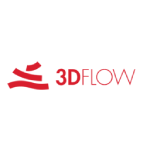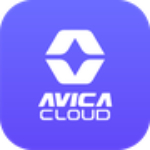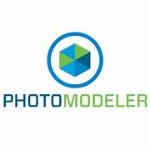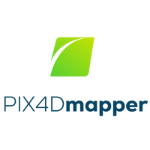List of Best Photogrammetry Software
Showing 10 of 11 products3DF Zephyr is a software that transforms your photos into 3D models. With its advanced algorithms and user-friendly interface, 3DF Zephyr allows you to easily create accurate and detailed 3D reconstructions. Say goodbye to complex and tedious modelin...Read 3DF Zephyr Reviews
Agisoft Metashape is a software tool that enables users to process and analyze large amounts of photogrammetric data to create high-quality 3D models and maps with ease. Perfect for professionals and hobbyists alike, this innovative software provides...Read Agisoft Metashape Reviews
Avica Cloud offers an all-in-one cloud-based software solution designed to streamline and simplify business processes. With its user-friendly interface and powerful tools, Avica Cloud helps businesses of all sizes increase efficiency and productivity...Read Avica Cloud Reviews
PhotoModeler is a and innovative software that revolutionizes the way we create accurate and detailed 3D models. With its highly advanced features, this software is a game-changer for professionals in various industries, from architecture to archeolo...Read PhotoModeler Reviews
ERDAS IMAGINE is a and versatile software used for geospatial data processing, analysis, and visualization. With its advanced tools and user-friendly interface, it provides a complete solution for handling complex spatial data. Whether you are a GIS...Read ERDAS IMAGINE Reviews
ImageStation the innovative software that revolutionizes image processing. With its advanced technology, ImageStation empowers users to effortlessly edit, enhance, and organize their photos with precision and ease. Say goodbye to tedious and time-con...Read ImageStation Reviews
IMAGINE Photogrammetry is a software that utilizes aerial and satellite imagery to create accurate 3D models and maps with ease. With its advanced algorithms and user-friendly interface, it sets a new standard for photogrammetry software in the indus...Read IMAGINE Photogrammetry Reviews
Are you looking for a reliable and versatile open-source software for your computer vision needs? Look no further than openMVG. With its vast range of functions and user-friendly interface, openMVG is the perfect tool for all your image-based 3D mode...Read openMVG Reviews
Pix4Dmapper is a software that transforms aerial and ground images into accurate and detailed maps, models, and point clouds. With its advanced technology, Pix4Dmapper empowers professionals in various industries such as surveying, construction, agri...Read Pix4Dmapper Reviews
PixPro is a solution for effortless photo editing. With its user-friendly interface features, PixPro makes enhancing your images a breeze. From basic adjustments to creative filters, PixPro has everything you need to elevate your photos to the next l...Read PixPro Reviews
- What Is Photogrammetry Software?
- Top Reasons Why Businesses Need Photogrammetry Software?
- What Are the Top Key Features of Photogrammetry Software?
- What Are the Top Benefits of Photogrammetry Software?
- What Are the Steps to Choose the Right Photogrammetry Software?
- What Are the Types of Photogrammetry Software for Different Industries?
- What Are the Technology Trends for Best Photogrammetry Software?
- What Are the Deployment Options for Photogrammetry Software?
What Is Photogrammetry Software?
Photogrammetry software is used to help measure and analyze objects in photographs or movies. It estimates distances, angles, and other attributes of objects in a photo or video using a combination of digital photographs or videos, field measurements, and algorithms. The software can then generate a 3D model of the object, enabling more precise examination and measurements.
It has a wide range of applications, including engineering, geography, agriculture, archaeology, disaster management, and many more. The best photogrammetry software, in particular, is used to measure items such as buildings, rivers, mountains, topography, drainage, and anything else that can be photographed or video.
This software allows for the creation of measurements and 3D models of these things in a timely, accurate, and cost-effective manner. Photogrammetry software can also be used to assess and analyze natural catastrophe areas such as floods and earthquakes, as well as to visualize traffic patterns and volume.
Top Reasons Why Businesses Need Photogrammetry Software?
1. Businesses can use photogrammetry software to create a 3D depiction of a product, allowing them to record fine features, measurements, and design properties.
2. The best photogrammetry software can correctly capture surfaces, textures, colors, and shadows.
3. Photogrammetry software helps firms scan and process vast amounts of data rapidly and correctly, resulting in more complete 3D models.
4. Businesses can collect data from regions that are difficult or impossible to access using photogrammetry.
5. Because of the accuracy of photogrammetry, businesses can properly measure objects that older methods cannot.
6. The top photogrammetry software can aid in the automation of time-consuming and difficult operations such as surveying and mapping.
7. Businesses can utilize photogrammetry to collect 3D measurements of items, which can then be used for reverse-engineering design projects.
8. It can be used to create high-quality 3D images for visualization, marketing, and product creation.
9. Businesses can use the best software photogrammetry to generate virtual prototypes more quickly and precisely.
10. Construction sites can be accurately documented using this software.
11. Quality control methods are more accurate and efficient when photogrammetry software is used.
12. Photogrammetry enables organizations to acquire data for 3D printing applications rapidly and efficiently.
13. Photogrammetric scans considerably shorten the time required to evaluate items and structures.
14. The top photogrammetry software can build accurate 3D models of items for visualization.
15. Photogrammetry can be used to accurately measure items in challenging or dangerous settings.
What Are the Top Key Features of Photogrammetry Software?
1. Automation: Aerial photography, satellite pictures, ground surveys, and LiDAR data can all be processed using photogrammetry software, which is highly automated.
2. 3D Modeling: From the detected data, the best photogrammetry software generates detailed 3D models and virtual objects.
3. Measurement: Photogrammetry can be used to produce precise measurements of items, surfaces, elevations, and surfaces of interest.
4. Orthophotos Creation: Orthophotos, also known as orthomosaics, are photographs that have been patched together with geometric distortions. Photogrammetry software can aid in the creation of orthomosaics from acquired photos.
5. Height Analysis: Several data sets can be utilized to examine height and contours using photogrammetry software.
6. Image Mosaicking: Online photogrammetry software can assist in the creation of seamless image mosaics from collected data.
7. Point Cloud Generation: It can create point clouds from image data for subsequent analysis.
8. Mesh Analysis: Mesh analysis with photogrammetry software creates a 3D representation of a scanned object from millions of points, which can then be analyzed further.
9. Texturing: Users can apply photo-textures to create 3D models using this software.
10. Scene Analysis: Photogrammetry can provide precision and detail for scenes' settings, which can then be used for measurement and analysis.
What Are the Top Benefits of Photogrammetry Software?
1. Increased accuracy: Photogrammetry software generates very precise 3D models, making it an excellent choice for surveying, mapping, and engineering.
2. Enhanced visualization: The op photogrammetry software may generate 3D models with detailed visuals that can be used to depict topography, environmental assets, and other items.
3. Reduced cost: Because photogrammetry software eliminates the need for extra equipment, it is a low-cost alternative for obtaining and modeling 3D data.
4. Fast processing: The best photogrammetry software is intended to process aerial pictures quickly, saving time and resources.
5. Comprehensive data analysis: Even for little things, a list of photogrammetry software can assess and measure details in 3D models.
6. Simplified data management: It streamlines data administration by allowing users to access, view, and share 3D models with ease.
7. Flexible application: Photogrammetry software is useful in a wide range of industries, from building to archaeology.
8. Improved collaboration: Photogrammetry software can improve cooperation and communication across a variety of projects by allowing users to exchange 3D models in a virtual environment.
9. Automated workflow: Parts of the 3D data gathering and model production process can be automated using digital photogrammetry software, minimizing the requirement for manual labor.
What Are the Steps to Choose the Right Photogrammetry Software?
1. Identify Your Requirements: The first step in selecting the best photogrammetry software is to identify your needs. Determine what the software needs to achieve and which features are most important to you. Consider the intricacy of your project as well as the sort of data you require.
2. Research Different Software: Once you've established your demands, you may start researching different software to see which one best meets them. Investigate the numerous features, capabilities, and costs associated with various solutions. Consider open source or less expensive options, as well as more robust, maybe more expensive ones.
3. Get Input from Colleagues: Consult with colleagues who have used the top photogrammetry software before to see which ones they recommend. Inquire about specific features, simplicity of use, and their overall experience.
4. Test The Software: Before making a selection, test the software if feasible. Photogrammetry software can be sophisticated, so a trial version is a fantastic way to determine if it matches your requirements.
5. Compare Costs: The cost of the best photogrammetry software can vary greatly, so it's critical to compare costs to ensure you're getting a decent bargain. Consider the entire cost of ownership, which includes any upgrades, maintenance, and support expenditures.
6. Final Decision: You can make a final conclusion on which photogrammetry software is ideal for your project after conducting study and testing.
What Are the Types of Photogrammetry Software for Different Industries?
Photogrammetry software holds significant utility across various industries. There exist various categories of software, each designed to cater to distinct requirements. In the context of the film business, the utilization of precision the best photogrammetry software is frequently observed to generate three-dimensional models.
This particular software has been specifically developed to seamlessly connect with video editing software and is frequently employed in the production of computer-generated imagery (CGI) special effects. The field of archaeology and cultural heritage studies frequently employs specialist photogrammetry software to facilitate the mapping and modeling of three-dimensional structures.
The top photogrammetry software has been specifically developed to capture precise measurements and generate authentic three-dimensional representations of historical monuments and ancient objects. The utilization of building information modeling (BIM) software in the construction business is advantageous as it employs photogrammetry techniques to expeditiously generate three-dimensional (3D) representations of building structures.
This particular photogrammetry software facilitates the rapid visualization of projects and problem-solving for architects, engineers, and contractors. The photogrammetry software online is widely employed in the surveying business for surveying and mapping. This particular software is specifically engineered to possess both high accuracy and speed, hence enabling the prompt delivery of outcomes.
In brief, a variety of photogrammetry software options exist catering to several businesses, with each tailored to meet the unique requirements of its respective customer base.
What Are the Technology Trends for Best Photogrammetry Software?
In recent years, notable advancements have been observed in the field of photogrammetry software, characterized by the introduction of numerous novel features and enhanced technological support.
The following are several prominent technological advances observed in the best photogrammetry software:
1. Improved 2D and 3D accuracy: The current state of photogrammetry software provides users with enhanced precision in generating 2D and 3D models, enabling more comprehensive scanning and measurement capabilities.
2. Better automation: Automated feature extraction technologies are playing a significant role in mitigating the reliance on manual labor for the processing of photogrammetry projects. These technologies has the ability to efficiently identify and classify features at a significantly faster rate compared to manual methods.
3. Simultaneous localization and mapping (SLAM): SLAM algorithms have demonstrated notable advancements in enhancing the precision and efficiency of mapping software, leading to their growing integration within photogrammetry applications.
4. Cloud-based solutions: The prevalence of cloud-based software solutions is on the rise, enabling customers to conveniently access their projects and data from various devices.
5. Deep learning integration: Numerous top photogrammetry software packages have currently incorporated deep learning algorithms in order to enhance precision, minimize manual effort, and expedite processing durations.
What Are the Deployment Options for Photogrammetry Software?
The utilization of photogrammetry software can be implemented through several methods, which are contingent upon the objectives and specifications of the user. Three often encountered deployment choices include cloud-based solutions, on-premise solutions, and mobile applications.
Cloud-based photogrammetry solutions are provided as a service, either by a singular vendor or through suppliers of software-as-a-service (SaaS). The aforementioned solutions are frequently characterized by their comprehensive nature and are designed to be managed by a remote server.
Consequently, they present an appealing choice for firms that have a restricted number of IT personnel. Installation and deployment of on-premise photogrammetry solutions necessitate the involvement of IT personnel and are the favored choice for individuals having access to specialized hardware.
The aforementioned solutions frequently exhibit scalability and customizability, enabling them to accommodate the precise requirements of users. Moreover, they can be specifically adjusted to align with a certain workflow. Mobile photogrammetry solutions have now been accessible for smartphone or tablet devices.
These applications enable users to get measurements and record object and geolocation data by utilizing the camera and sensors integrated within the device. They are a highly suitable option for anyone seeking lightweight and easily transportable alternatives.










